Breakfast at Santibanez de Valdeiglesias was good. We walked with our US friends, Joanne and Fumi, as far as Astorga where they were going to stay.
We passed a pilgrim memorial – we pass these almost every day, each one different, and each dedicated to a pilgrim who lost his or her life on the road to Santiago.
We had decided to pass on through Astorga due to recent reports of packs being stolen from the municipal Albergue and other thefts from pilgrims. Some Albergues don’t allow packs in the dorms, so they have a common rack for packs and boots near the entrance. It is understandable as a measure to reduce the risk of the spread of bed bugs, but it also makes it easier for people who might look a bit like someone who has walked for days, to enter, pick up a pack and walk out looking like every other pilgrim.
The path took us steadily uphill and past an adobe donativo bar with a labyrinth laid out next to it. I walked the labyrinth, thinking of the path we had come so far, both physically and metaphorically.
There are more hobbit houses to be seen on the way into town. But our Canadian friend Kristine had alerted us to a seemingly insignificant bar called ‘Bar Oasis’ at San Justo de la Vega on the outskirts of Astorga. It was significant because apparently each year there is a national contest for the best tortilla in Spain, and you guessed it, the Oasis had won last year’s title. And yes the tortilla was delicious – just the right texture, soft in the centre and full of flavour.
Astorga is a common starting point for Spanish pilgrims, and it is also a meeting point where the Via de la Plata pilgrims join the route of the Camino Frances to proceed on to Santiago de Compostela.
The Cross of San Toribio stands on the hill about 5km from Astorga, as you catch your first view of the city. There was a local busker with a guitar singing about los peregrinos (pilgrims) and the Camino as we passed. Saint Toribio was a Bishop of Astorga who lived in the C5th A.D. According to legend he undertook a pilgrimage to Jerusalem and returned with the largest portion of the ‘True Cross’ on which Christ was crucified, which now resides in a reliquary at the monastery in Liebana northeast of Leon. It is supposedly the arm of the cross to which Christ’s left hand was nailed. As Toribio left Astorga he was said to have fallen on his knees exactly at this place in his final farewell to the city.
The Cathedral really stands out in the city, being constructed at the highest point in the old part of town.
There are several Roman dig sites along the Roman road. The Roman ruins of a large villa/house lay next to and partly beneath the church of St Bartholomew. The mosaic floor was still mostly intact, and had vines, bears and birds as motifs. Apparently, the town of Astorga dates back to the C1st AD. There are also substantial parts of the original Roman wall around the town still standing.
The Palacio Episcopal stands out in Astorga. It was designed and begun by Gaudi, and there are similarities with the Gaudi building in Leon. While no longer a Bishop’s house, the building now houses a pilgrim museum.
The third great attraction in Astorga is, of course, the Cathedral of Santa Maria which dates from the C15th. It, in turn, was built on the site of an earlier C11th Romaesque church, and it remains to this day an important stop for pilgrims on the Camino de Santiago. Construction was begun in 1471 and work continued into the C18th. Consequently, it displays a smorgasbord of styles. The inside is Gothic, the towers Baroque. The façade and portico are Renaissance and the cloisters represent the Neoclassical style.
The Ayuntamiento (Town Hall) is notable for its baroque façade.
It is particularly noted for its clock which strikes the hour with the emergence of two Muragato figures, a male and female. It is situated in the Plaza España.
I could also mention the chocolate museum, but it was closed when we passed through.
We had some lunch before continuing out of the town towards our destination for the day, Murias de Rechivaldo.
Our path took us past the monastery dedicated to St Francis of Assisi – in honour of St Francis’ own Camino de Santiago pilgrimage. According to the legend, the monastery and church of San Francesco were founded in 1212 by Saint Francis of Assisi personally during his pilgrimage to Santiago de Compostela.
Not long after Astorga comes the village of Valdeviejas. We refilled our water bottles at the Ermita del Ecce Homo. This C16th hermitage is associated with a miracle. Before the water fountain was built there was a well to slake the thirst of pilgrims on the way to Santiago. The legend goes that a pilgrim accompanied by her young son went to drink at the well, and the son fell in. She prayed to Christ to save her son, and the water rose up, bearing her son until she could reach him. There is an inscription next to the fuente in several languages. The English version reads: “The Faith, Fountain of Health”.
We had booked a double room at a wonderful Albergue – and met up with Kristine and John once more. We were ready for some great vegetarian food and of course the local wine, which was exceptional. The village is a traditional Maragato-style place with the houses made from stone, rather than adobe. Maragato culture can be seen in the form of the red-headed Iberians that served traditionally as the muleteers transporting goods between the coast and Inland Spain. They have a distinctive cuisine, which typically involves a number of meat dishes.
The room was delightful, even if the door came off its hinges! After all, who could resist dining beneath a grape vine 🙂
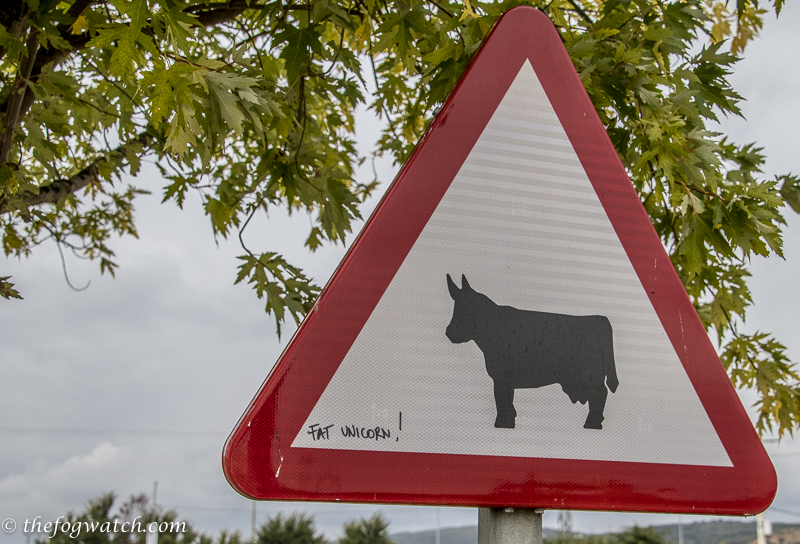
________________________________________
INDEX – If you wish to follow our journey from the start, or jump in to any of the Camino posts,
here is a link to the index page – also found in the navigation bar at the top of this blog
________________________________________

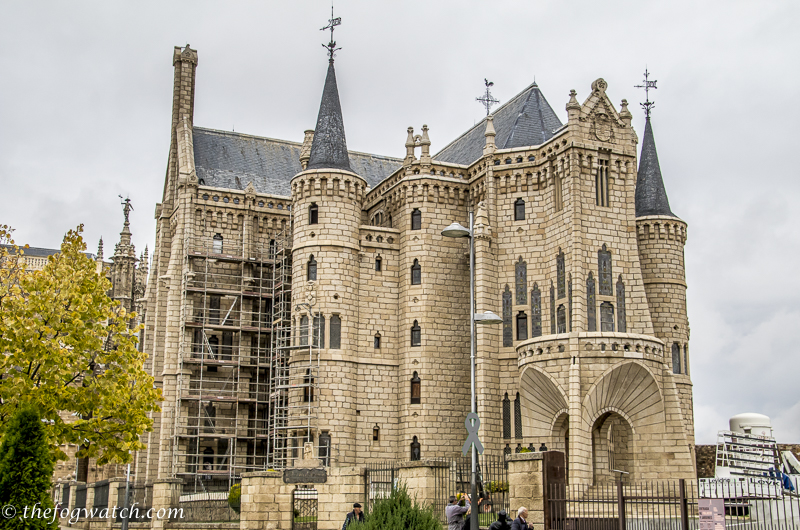
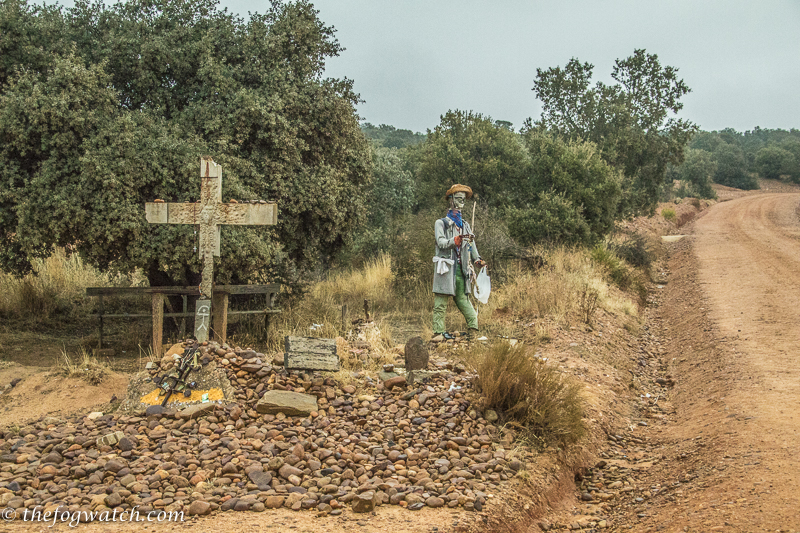
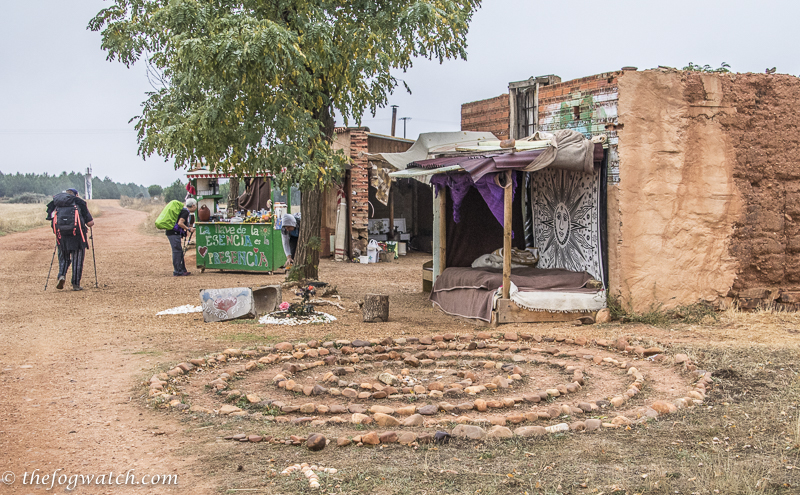
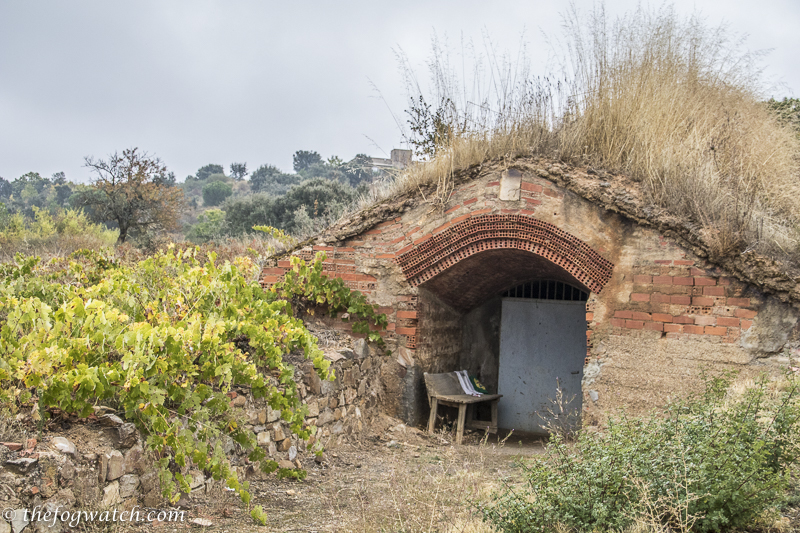

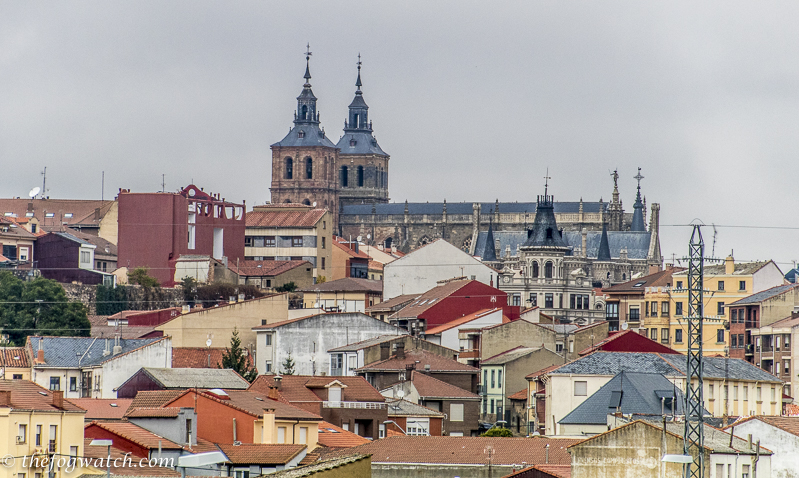
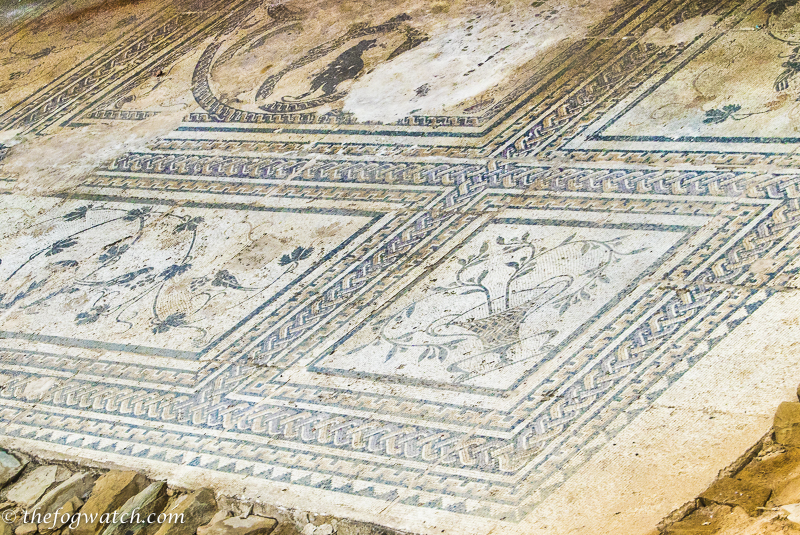
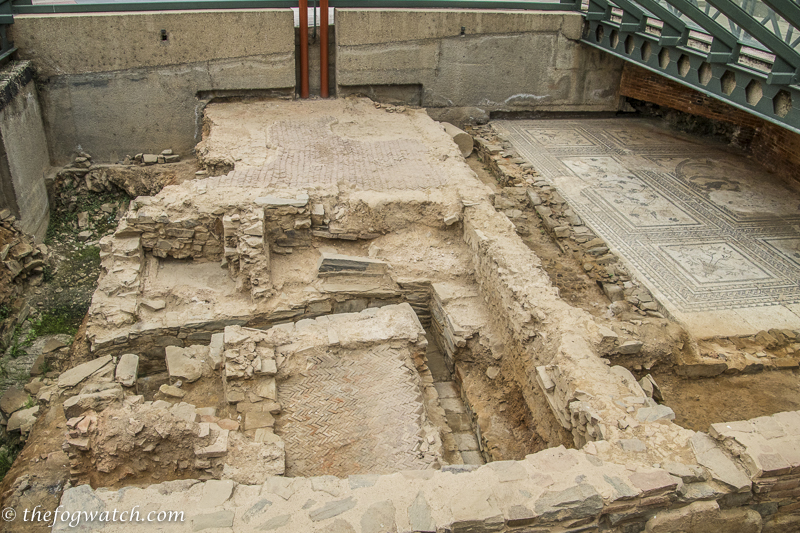

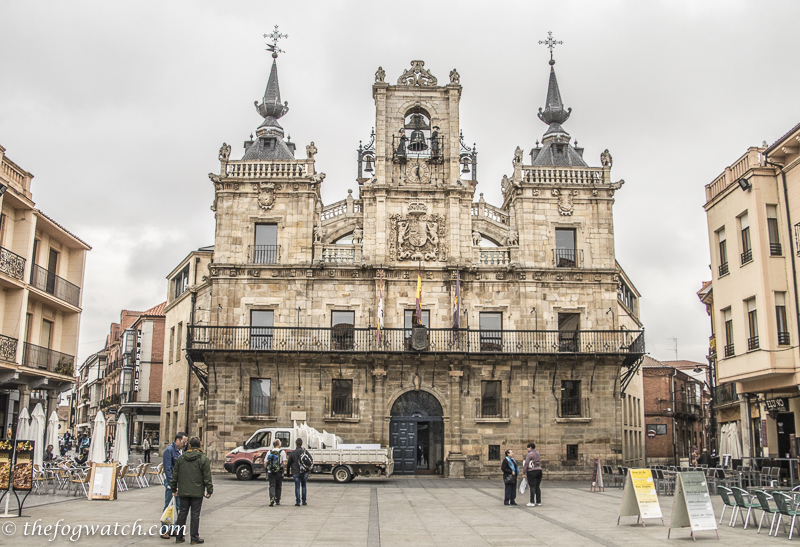
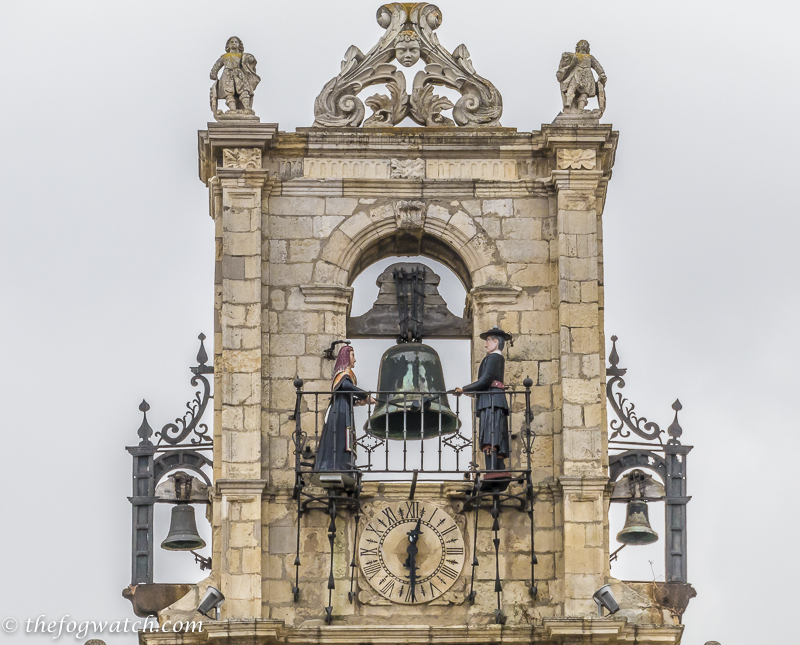

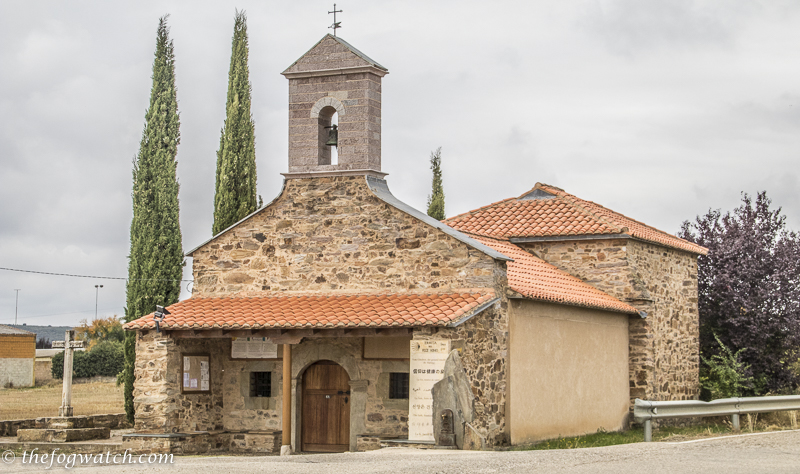
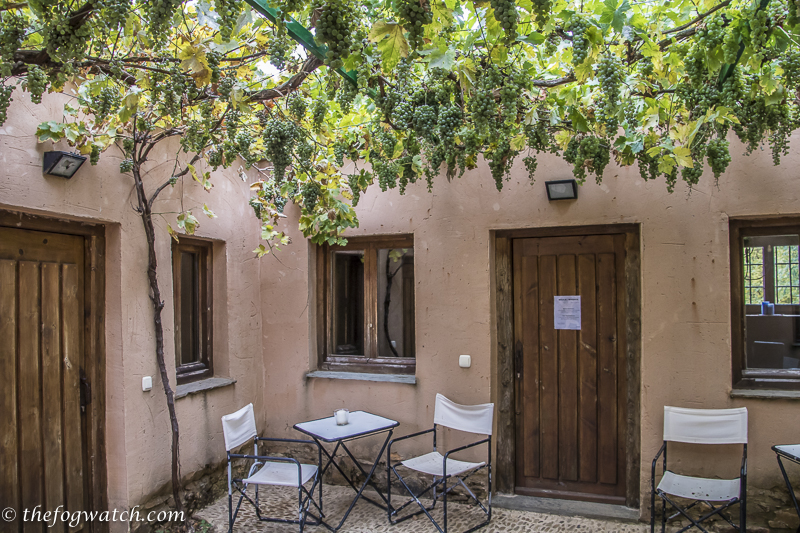
Though Sharon posted regularly of your updates to your Camino Trail Pilgrimage, I wanted to read about it in large chunks. So I sat today and read from Sept. 19 to this posting. I love your style of writing. You give enough history and information to give an understanding of what you are encountering but I found myself feeling like in some small way, I too had participated in the journey. Your photographs are striking and detailed and beautiful and your words are put together simply yet eloquently. Thank you for sharing your journey and I look forward to the next instalment.
Thank you so much for your lovely comment Odarka – yes it was such an amazing journey I decided to take the time to write it up properly. I’m so glad you are enjoying the photos and the history – it really struck us that we were walking in the footsteps of a thousand years of pilgrims, but also through land that has been inhabited by people and pre-human hominids for over a million years. Such history is special!